.
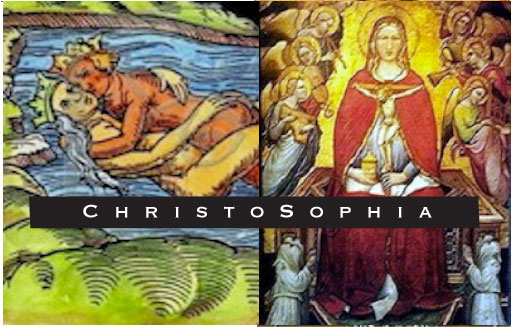
.







Sacred Marriage:
The Secret Key to Christian Spirituality
Cynthia Avens
In the middle of the Castle is found the bedchamber, in the
center of which stands a huge four-poster bed. A candle
burns at the head and the foot and at each side of the bed.
On the bed lies a beautiful woman with milky white skin and
long golden hair, adorned as a Queen. She is the image of a
Renaissance goddess. Beside her lies a beautiful man adorned
as a King; he has dark hair and black eyes which see into the
spiritual world. The King and Queen unite, surrounded by the
light of the four burning candles. Leaves and flowers now grow
from the body of the goddess, with green vines encircling the
bodies of the lovers. The warm, fragrant smells of Spring fill
the chamber.
When this image appeared to me during a visionary meditation I realized that I was witnessing the archetypal "sacred marriage," the central symbol of diverse spiritual traditions. The union of god and goddess manifested in ancient Egypt as Osiris and Isis, in Greece as Adonis and Aphrodite, in Hinduism as Shiva and Shakti, in Buddhism as Tara and Avalokitesvara. The sacred marriage symbolizes the "mystical union of opposites," with the bride representing the "incarnate self" and the bridegroom representing the "disincarnate Self."(1) The goddess symbolizes the divine presence within the physical world while the god symbolizes the transcendent spirit; the sacred marriage is necessary to unite the physical and spiritual worlds in order to engender the fertility that brings forth life.
The centrality of the sacred marriage motif in the mythology of most spiritual traditions throughout the world attests to its symbolic significance within the human psyche. And for this reason, its virtual absence within Christianity is glaringly apparent. For where is the universal archetype of the marriage of god and goddess to be found in a religion that emphasizes an exclusively masculine image of God, expressed as a Trinity of male Father, male Son, and ambiguously gendered Holy Spirit? Yet the sacred marriage, as an archetypal image within the psyche of all human beings, exists as a secret that is deeply hidden within Christian tradition. And the discovery of this secret provides the key that will unlock the most profound mysteries of the Christian faith.
The search for this key to Christian spirituality must begin with the Gnostic Christians of the first centuries who were guardians of the "inner mysteries" of the faith. Christianity began as a "Mystery School" in which the central figure of Jesus Christ bore many resemblances to the divine figures of the Pagan Mystery Schools such as Osiris, Dionysius, and Mithras. The sacred marriage of the goddess and the god as her son/lover was an essential feature of the Pagan Mysteries that was also incorporated in the mythology of the early Christians known as Gnostics. But with the suppression of the Gnostic teachings that accompanied the development of the Church as an institution, only the "outer mysteries" of the religion are now known to most Christians. However, the "inner mysteries" of the Gnostic Christians - including the archetypal form of the sacred marriage - can be rediscovered today by those who are willing to embark on the same inward search for illuminating gnosis.
This search reveals that the mystical marriage was central to the mythology of the early Christian Gnostics, who envisioned Christ and Sophia as divine consorts in the celestial realms of the Pleroma. The essential Gnostic myth describes the "Fall" of the divine Sophia into the world of matter, and the descent of Christ from the heavenly realms in order to rescue her. This is the primal purpose of Christ as savior and redeemer within the Gnostic framework. The cosmic Fall will be healed in the fullness of time as Christ and Sophia enter the bridal chamber in the Pleroma and unite in the sacred marriage.(2)
The myth of the "fall of Sophia" taught by Gnostic Christians is reflected in the "fall of Adam and Eve" as taught by the Christian Church. In both myths the underlying theme is the experience of separation from the Divine. But the Gnostic perspective elevates this tragic experience of life to a cosmic condition rather than viewing it simply as the result of human sin. In the "inner mysteries," the story of Adam and Eve symbolizes the "fall" into duality - the separation of the body/ego from the Self that comes about through the development of self-awareness. Christ and Sophia redeem Adam and Eve by returning to the Garden as whole, Self-realized beings united through the mystical marriage - the union of the body/ego and the Self. This represents the journey of each individual from the development of the ego that comes with self-awareness, to the attainment of Gnosis and the conscious realization of unity with God as one's essential nature. As Timothy Freke and Peter Gandy describe this process, "The primal syzygy at the beginning of creation is the One appearing to be two. The mystical marriage at the fulfillment of creation is the two knowing themselves to be One."(3)
The primary sacrament of the Gnostic Christians involved the sacred marriage of the initiate within the "bridal chamber." The Gnostic Gospel of Philip refers to the supreme importance of the bridal chamber, as it is "the holy of holies" in which "redemption takes place."(4) Although the actual nature of the sacrament is not known, Christians' enactment of the sacrament of the sacred marriage - representing the union of Christ and Sophia in the bridal chamber - was a very powerful ritual. The Gospel of Philip provides clues to the transformation that this sacrament confers on the initiate: "If anyone becomes a son of the bridal chamber, he will receive the light…The world has become the eternal realm (aeon), for the eternal realm is fullness for him."(5) The light of the bridal chamber enables the Gnostic to see the unity of the earthly and the transcendent realms, as symbolized by the goddess and the god. Like Sophia, the feminine Soul unites with the masculine Spirit of Christ in the bridal chamber. The illumination that the Gnostic receives is the realization of ones divine essence in the experience of union with God. The human being returns symbolically to the Garden of Eden in a state of wholeness, but now with the differentiated consciousness that has been gained through the experiences of human life. For the Gnostic Christians, salvation is seen as the return to this "archetypal unity" symbolized as the reunion of Adam and Eve.(6)
Another Gnostic text, "The Exegesis of the Soul," provides a further elaboration of the central Gnostic theme of the sacred marriage. In this myth, the fall of the feminine soul into the physical world, return to heaven, and union with her brother/lover in the bridal chamber, is an obvious parallel to the myth of Sophia. The fruit of the bridal chamber is described in this way: "And when she had intercourse with him, she got from him the seed that is the life-giving spirit…This is the resurrection that is from the dead."(7) This passage shows that the motifs of the bridal chamber and the resurrection represent the same symbolic truth in Christian tradition. As the supreme Mystery, they both represent overcoming the illusion of duality and identification with the "false self" of earthly incarnation through Gnosis, which is the experiential knowledge of the Oneness that unites both God and Self. The sacred marriage, described as the culminating event in Gnostic mythology when Christ will unite with Sophia to restore the fullness of the Pleroma, is also being continually enacted in the inner world of the Gnostic initiate. As the Gospel of Philip instructs the initiate that he will receive the light in the bridal chamber, it also warns: "If anyone does not receive it while he is here, he will not be able to receive it in the other place…when he leaves the world he has already received the truth…"(8) This description of the Gnosis to be gained in the bridal chamber is analogous to the resurrection of the soul, which is seen as a future event for most Christians. But the resurrection is experienced in the here and now by the initiate of the inner mysteries who has realized his or her essential divine nature. In a beautiful description of this mystery, Timothy Freke and Peter Gandy say, "When we experience the mystical marriage we become aware of ourselves as being. We are at rest, the still center of the turning world of appearances."(9)
In Gnostic mythology, the union of Christ and Sophia in the heavenly Pleroma is reflected in the intimate relationship between Jesus and Mary Magdalene in the earthly realm. Many Gnostic texts portray Mary Magdalene as the Beloved of Jesus. For example, the Gospel of Philip states that Jesus "used to kiss her often"(10) and in the Gospel of Mary, the disciple Levi states, "Surely the Savior knows her very well. That is why he loved her more than us."(11) Mary Magdalene as the human consort of Jesus is a symbolic image of Sophia as the spiritual consort of Christ. Mary Magdalene's most prominent role in the tradition of the Christian Church has been that of the penitent whore. Although there is no evidence in the Scriptures to support this image of her, the archetypal symbolism of this role also connects her to Sophia. For, just as Christ redeems Sophia who has fallen from the Pleroma to the earthly realm, so Jesus redeems Mary Magdalene, the "fallen woman," from her sin of prostitution. After this redemption, the Divine Feminine - in the form of Sophia and Mary Magdalene - unites with the Divine Masculine in the form of the heavenly Christ or earthly Jesus. The archetypal significance of this union for the Gnostic Christian was its representation of the "inner marriage" of the dualities of masculine and feminine within the soul. Mary Magdalene through her relationship with Jesus becomes a model for the Gnostic Christian of the human being who has overcome the dualism of Adam and Eve. "The Magdalene myth recapitulates the fall of Sophia…in rediscovering her divinity, she becomes a model for the soul who seeks to do the same."(12)
The mythology of the Gnostic Christians, consistent with the fundamental symbolism of pagan religions that integrated the masculine and feminine polarities, was harshly denounced as "heresy" by the Church in its drive to consolidate power and codify Christian doctrine. But because the mythic sacred marriage derives from the archetypal structure of the human psyche, its imagery could be buried but never destroyed. Although now lost to the Christian religion which formally allowed only masculine symbols for the Divine, the image of the sacred marriage nevertheless percolated through Western culture for many centuries in the mystical practices known as Alchemy. The investigations of alchemists in the Middle Ages, which lay the foundation for the modern science of chemistry, are best known for their purported attempts to transform base metals into gold. However, this literal interpretation disguised a much deeper psychological and spiritual meaning to the alchemical quest in a time period when it was very dangerous to challenge the authority of the Church by pursuing the inner mysteries. For central to these esoteric studies was the symbol of the "alchemical marriage" or "coniunctio." The sacred marriage archetype of the early Gnostic Christians reappeared in disguised form in the arcane symbolism of the medieval alchemists. Many images in alchemical texts refer to the "coniunctio" or union of Masculine and Feminine: Sol (Sun) and Luna (Moon), fire and water, salt and sulphur, and King and Queen. According to David Fideler, a central symbol of the "alchemical marriage" is the six-pointed star or hexagram, for the fusion of the two triangles signifies the union of opposites. The triangle pointing upwards is an archetypal image of the Masculine; it symbolizes the god, the sun, and the ego. The triangle pointing downwards is an archetypal image of the Feminine; it symbolizes the goddess, the moon, and the unconscious.(13) The hexagram can also be seen as a symbol of Christ and Sophia, uniting the masculine world of spirit with the feminine world of matter, thus pointing to the penetration of the earthly realm by the divine. This symbolizes the ultimate goal of the alchemist's quest, as described by David Fideler: "the individual is able to reconcile the temporal with the eternal in the living fabric of Life, thus fulfilling the 'alchemical marriage' of opposites on a cosmic scale."(14)
The archetypal significance of the sacred marriage within the psyche of the individual has been rediscovered in our modern era by the psychologist C. G. Jung. Jung made extensive studies of both Gnosticism and Alchemy because he realized that their representations of the "hieros gamos" or "coniunctionis" provided Western culture with the symbols that represent the psychological process of "individuation." According to Jung, the "inner marriage" of the opposites within the psyche - masculine/feminine, conscious/unconscious, divine/human - gives birth to the Self, the archetype of wholeness. The Self archetype is both the guide and the goal of the individuation process, which is Jung's psychological term for the Gnostic or the alchemical quest. This is the inner transformative process that leads to the illumination of Gnosis for the early Christians, the attainment of the Philosopher's Stone for the medieval alchemists, and the realization of the Self for the modern individual. Like the Gnostic initiate who experienced the inner union of Christ and Sophia in the sacrament of the bridal chamber, so the individuated human being returns to the Garden of Eden with the transformed consciousness of Self-realized wholeness.
Because the image of the sacred marriage has such profound archetypal importance for the human psyche, it must be rediscovered today in those places where it has been deeply hidden within Christian tradition so that it can regain its prominence in the dominant mythology of Western culture. For the image of the union of Masculine and Feminine is the key to the inner mysteries of Christian spirituality that must be experienced once again to revitalize the faith and to transform the soul. This is an extremely daunting task that requires both individual and collective effort, for the symbol of the sacred marriage must be recovered from many different levels. On the personal level, each individual must commit himself or herself to the arduous journey toward individuation that leads to the "inner marriage." On a historical level, the sacred partnership of Jesus and Mary Magdalene must be recognized as the foundation upon which the early Christian community was built. On a transcendent level, the union of Christ and Sophia must regain the central importance that it possessed in the early Christian mythos. This renewed Christian mythos that is emerging today - uniting the ancient wisdom upon which it was founded with the insights of modern psychological understanding - provides us with the challenge that is always inherent to the transformative process. If our hearts and minds are open enough to accept this challenge, then we may join the early Gnostic Christians in saying:
"the soul recognizes her beloved
and she rejoices once more."(15)
For more information refer to Walking the Path of ChristoSophia: Discovering the Hidden Tradition in Christian Spirituality Chapter IV: "Gnostic Christianity"
NOTES
1. Timothy Freke and Peter Gandy, The Jesus Mysteries NY: Three Rivers Press, 1999), p.123.
2. Hans Jonas, The Gnostic Religion (Boston: Beacon Press, 1963), p. 196.
3. Timothy Freke and Peter Gandy, Jesus and the Lost Goddess (NY: Three Rivers Press, 2001), p. 148.
4. James M. Robinson, Ed., The Nag Hammadi Library (San Francisco: HarperSanFrancisco, 1988), p. 151.
5. Robinson, p. 160.
6. Soror A. L., The Mystery of the Bridal Chamber in the Gospel of Philip p. 8.
7. Robinson, p. 196.
8. Robinson, p. 160.
9. Jesus and the Lost Goddess, p. 251.
10. Robinson, p. 148.
11. Robinson, p. 527.
12. Soror A.L., p. 8.
13. David Fideler, Jesus Christ Sun of God (Wheaton, Illinois: The Theosophical Publishing House, 1993), p. 210.
14. Fideler, p. 186.
15. June Singer, The Gnostic Book of Hours (San Francisco: HarperSanFrancisco, 1992), p. 108.
Back to top
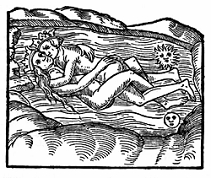
The centrality of the sacred marriage motif in the mythology of most spiritual traditions throughout the world attests to its symbolic significance within the human psyche
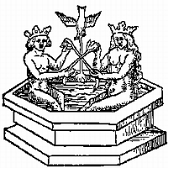
The mystical marriage was central to the mythology of the early Christian Gnostics, who envisioned Christ and Sophia as divine consorts in the celestial realms of the Pleroma.
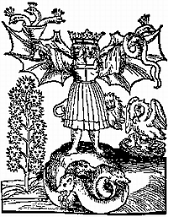
In Gnostic mythology, the union of Christ and Sophia in the Pleroma is reflected in the intimate relationship between Jesus and Mary Magdalene in the earthly realm.
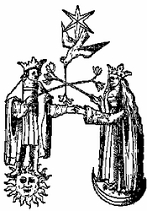
According to Jung, the “inner marriage” of the opposites within the psyche – masculine/feminine, conscious/unconscious, divine/human – gives birth to the Self, the archetype of wholeness.





